The Taj Mahal, India’s most iconic monument and one of the modern wonders of the world, was a site we planned to visit “because we had to.” After all, you can’t travel to India without seeing this monument to love, built by Emperor Shah Jahan, who famously said it “brought tears to the eyes of the Sun and the Moon.”
Although we were initially a bit sceptical, I have to admit the visit started with a “let’s see how this goes” and ended with a “wow, this is amazing.”

After passing through strict security at the entrance to the complex, with the sun still hidden and a thick fog in the air, you arrive at the main gate. This covered area is where people start to gather, as just a few meters ahead is the Darwaza, or entrance portal, from where you can catch your first glimpse of the breathtaking Taj Mahal.
The view from here is stunning, with gardens on either side and canals reflecting the monument. The thick fog creates a mystical atmosphere, and as the first rays of sunlight hit the white marble of the mausoleum, it takes on a reddish hue. Welcome to one of the wonders of the world.
It is believed that around 22,000 workers were involved in the construction of the Taj Mahal, including masons, stonemasons, sculptors, painters, calligraphers, dome builders, and other craftsmen from Central Asia and Iran.
The entire Taj complex consists of five main components: the Darwaza (main entrance), Bageecha (gardens), Masjid (mosque), Naqqar Khana (rest house), and Rauza (main mausoleum).
The Taj Mahal covers an area of 42 acres, with the land sloping gradually from south to north towards the Yamuna River, creating a series of descending terraces. The main entrance, located at the end of a long watercourse and adorned with calligraphy from the Quran, was built between 1632 and 1638.
Originally, this sandstone gate had a solid silver door, designed to prevent a view of the tomb until visitors were right at the threshold. The entrance features vertical symmetry and Arabic calligraphy of Quranic verses in black stone.
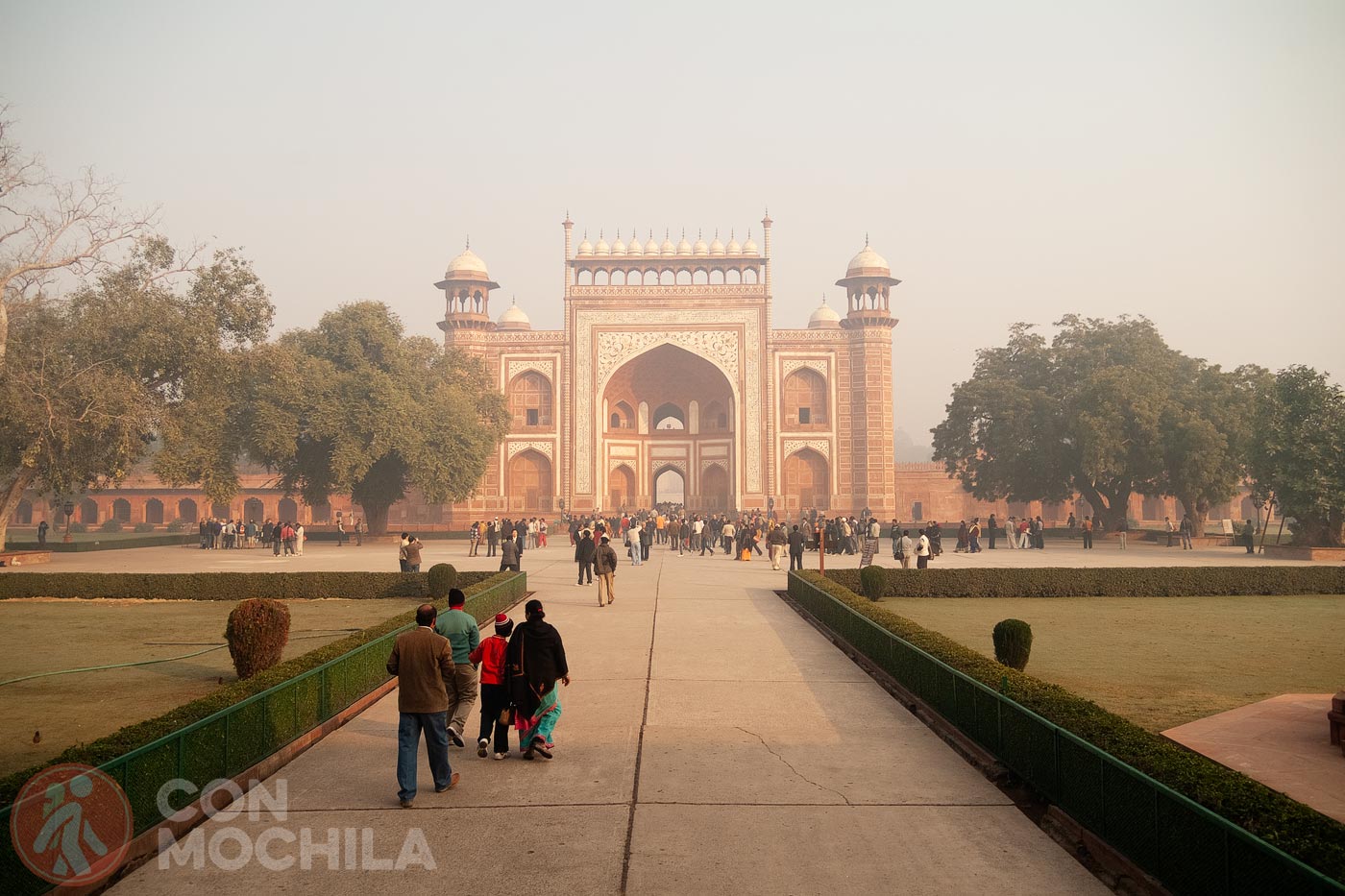
The original door of this sandstone gateway was made of solid silver. It was constructed to prevent people from seeing the tomb until they were right at the door itself.
With vertical symmetry, the main entrance of the Taj Mahal is bordered with Arabic calligraphy of verses from the Quran, composed of black stone.
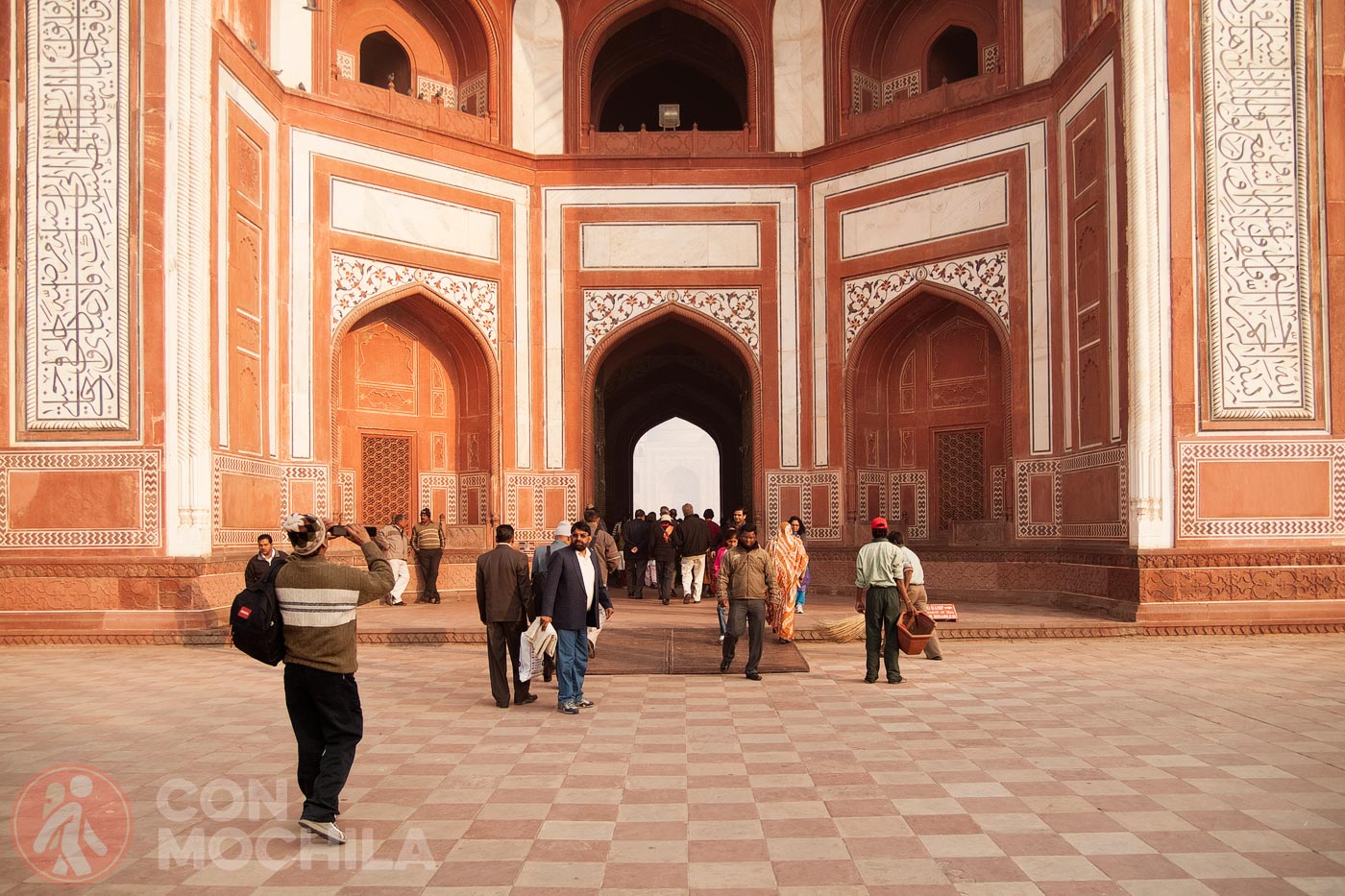
The main tomb stands on a square platform, raised 50 meters above the riverbank, with the ground leveled to reduce seepage from the river.
Four minarets at the corners, each 41 meters high, frame the square and highlight the beauty of the central dome, which is 17 meters in diameter and 25 meters tall.
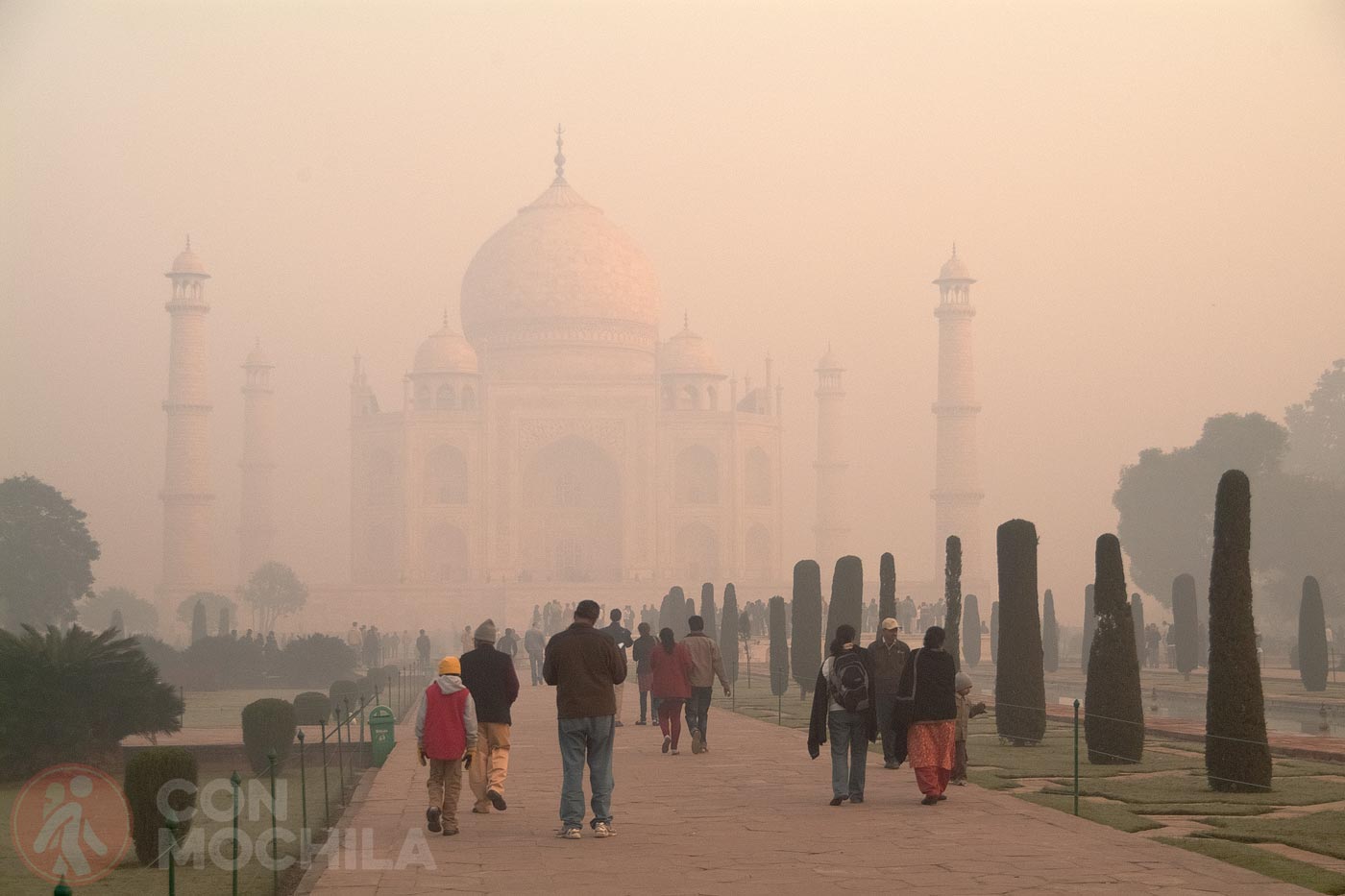
The western side of the main tomb houses the mosque, while the Naqqar Khana (guest house) is located on the eastern side, both made of red sandstone. These two structures not only provide architectural symmetry but also create a striking contrast in color. They are mirror images of each other.
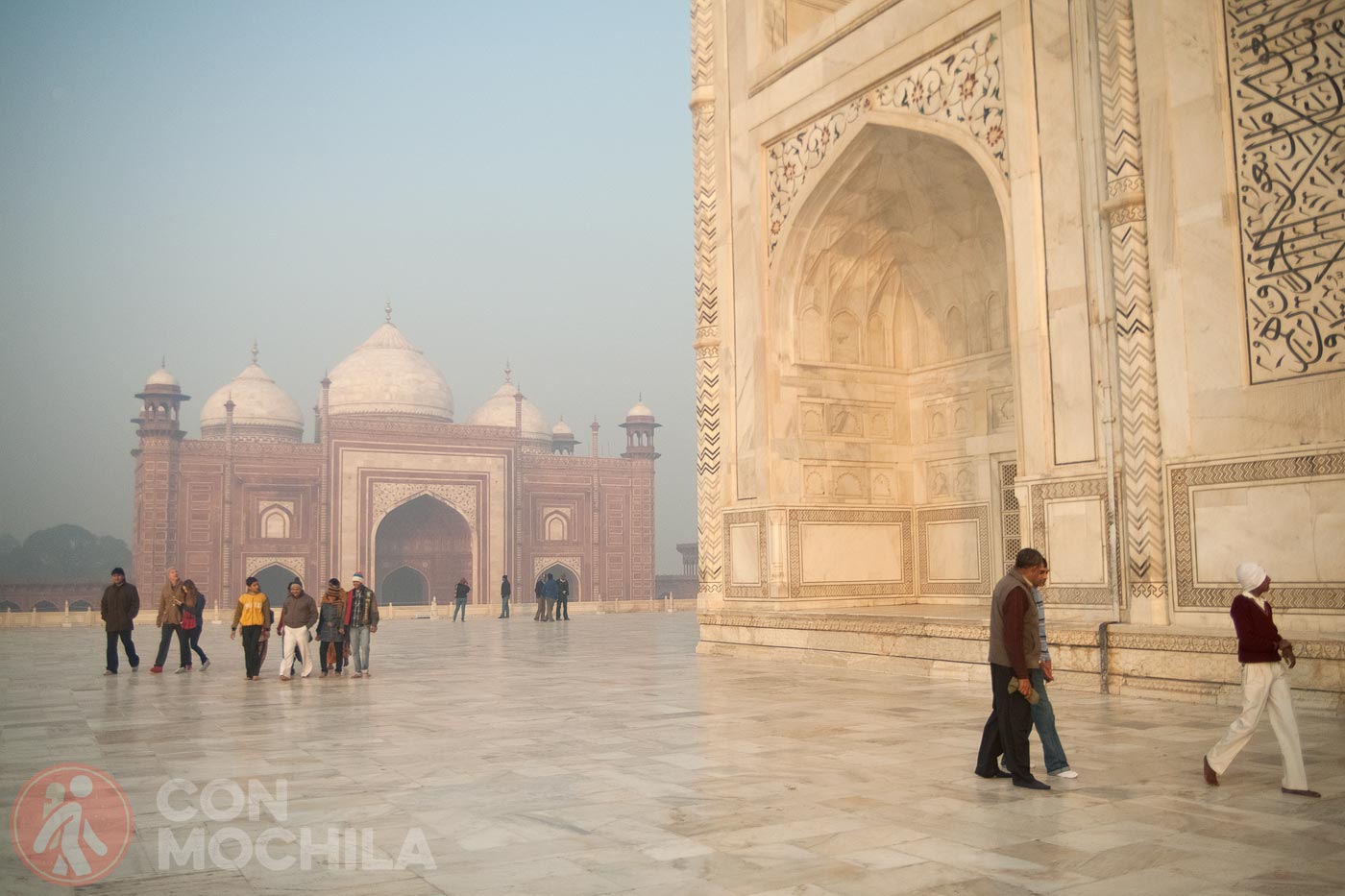
The total area is 580 meters by 300 meters, although the garden itself covers only 300 by 300 meters. The immaculate symmetry of the garden’s layout can be appreciated from every angle.
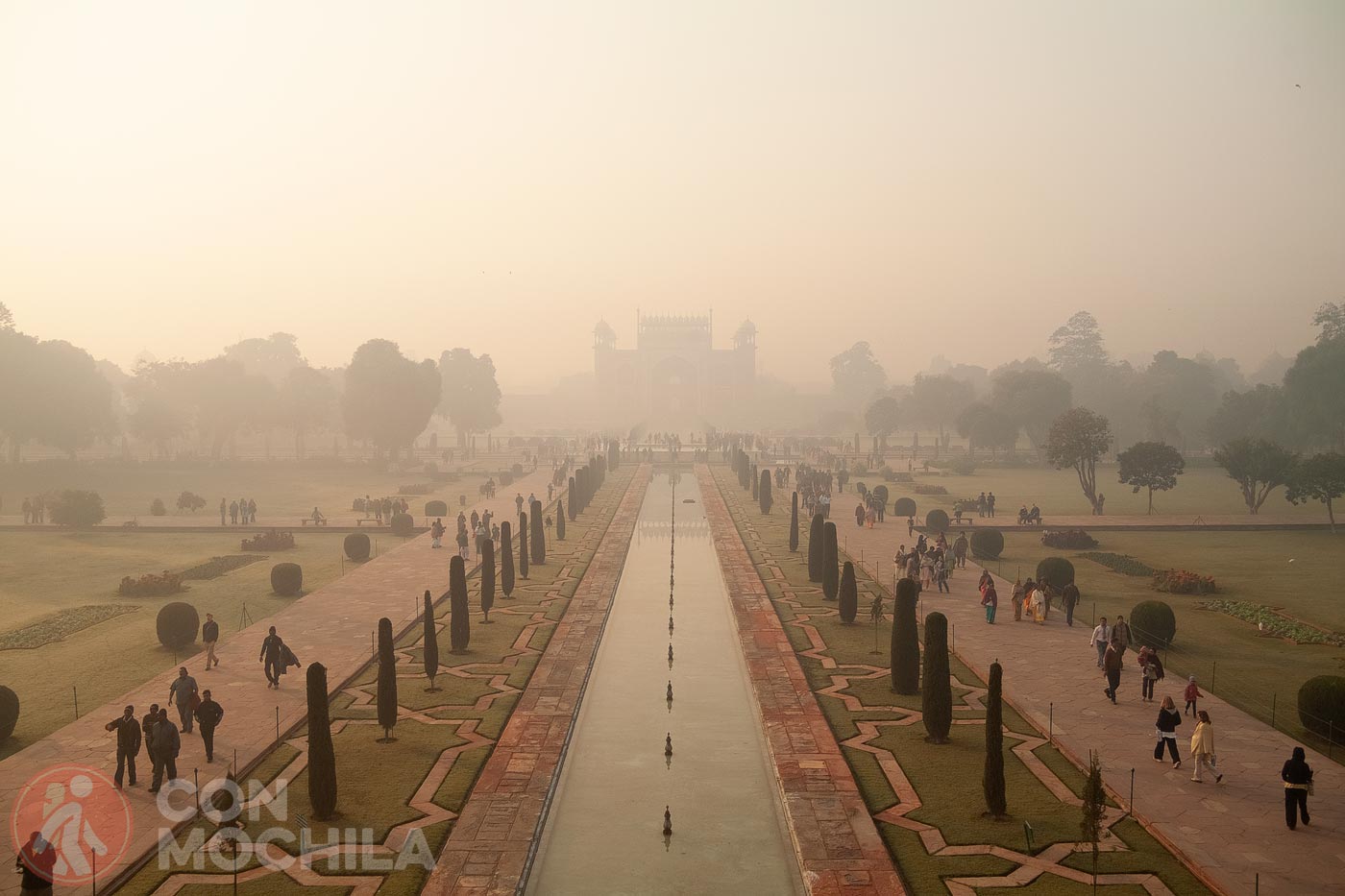
The Islamic-style architecture of the garden carries a deep symbolic meaning, representing spirituality. According to the Holy Quran, lush, well-watered greenery symbolizes Paradise in Islam. Even today, the garden remains a peaceful and relaxing space within the complex.
The most famous and visually striking element of the Taj Mahal is the white marble mausoleum.
The building is composed of a large base divided into many rooms, with the central chamber housing the cenotaphs of Shah Jahan and Mumtaz Mahal. The base is a cube with chamfered corners, measuring 55 meters on each side.
On each side, a large “pishtaq”, or arcade, frames the “iwan”, with a similar upper level of low-arched balconies. These main arches rise to the roof of the base, and at each corner of the platform, a minaret complements and enhances the overall ensemble.
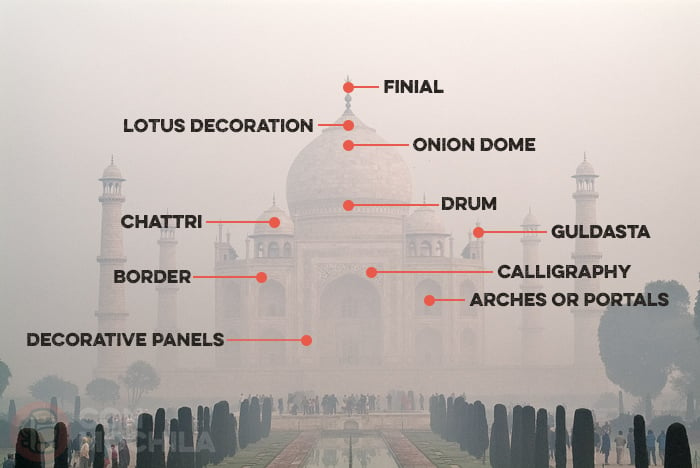
The white marble dome over the mausoleum is, at first glance, the most spectacular part of the complex. Its height is nearly equal to that of the base, around 35 meters, a dimension accentuated by its support on a circular drum seven meters high.
The dome is of the “onion” type, named for its distinctive shape. In Arabic, this type of dome is called “amrud”, meaning “apple-shaped.” The upper third of the dome is adorned with a ring of raised lotus flowers, and at the top, a golden spire or finial blends Islamic and Hindu traditions.
This spire ends in a crescent moon, a typical Islamic motif, with its points facing the sky.
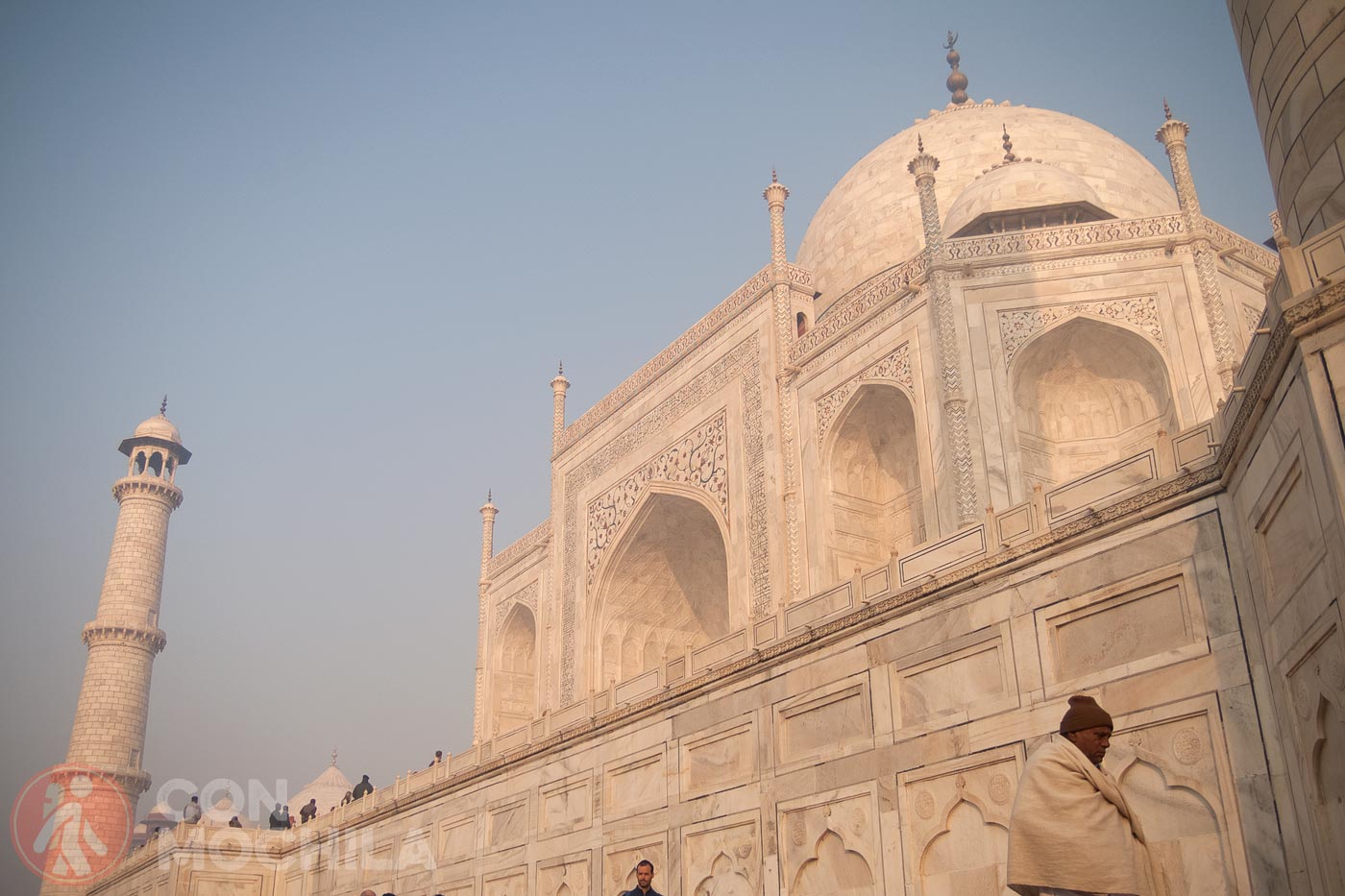
Along the side walls, stylized “guldastas” (decorative spires) enhance the building’s sense of height. The lotus motif is repeated in the “chattris” and “guldastas”.
At each corner of the base rises a minaret — four towers, each over 40 meters tall, further emphasizing the Taj’s affinity for symmetry and repetition in design.
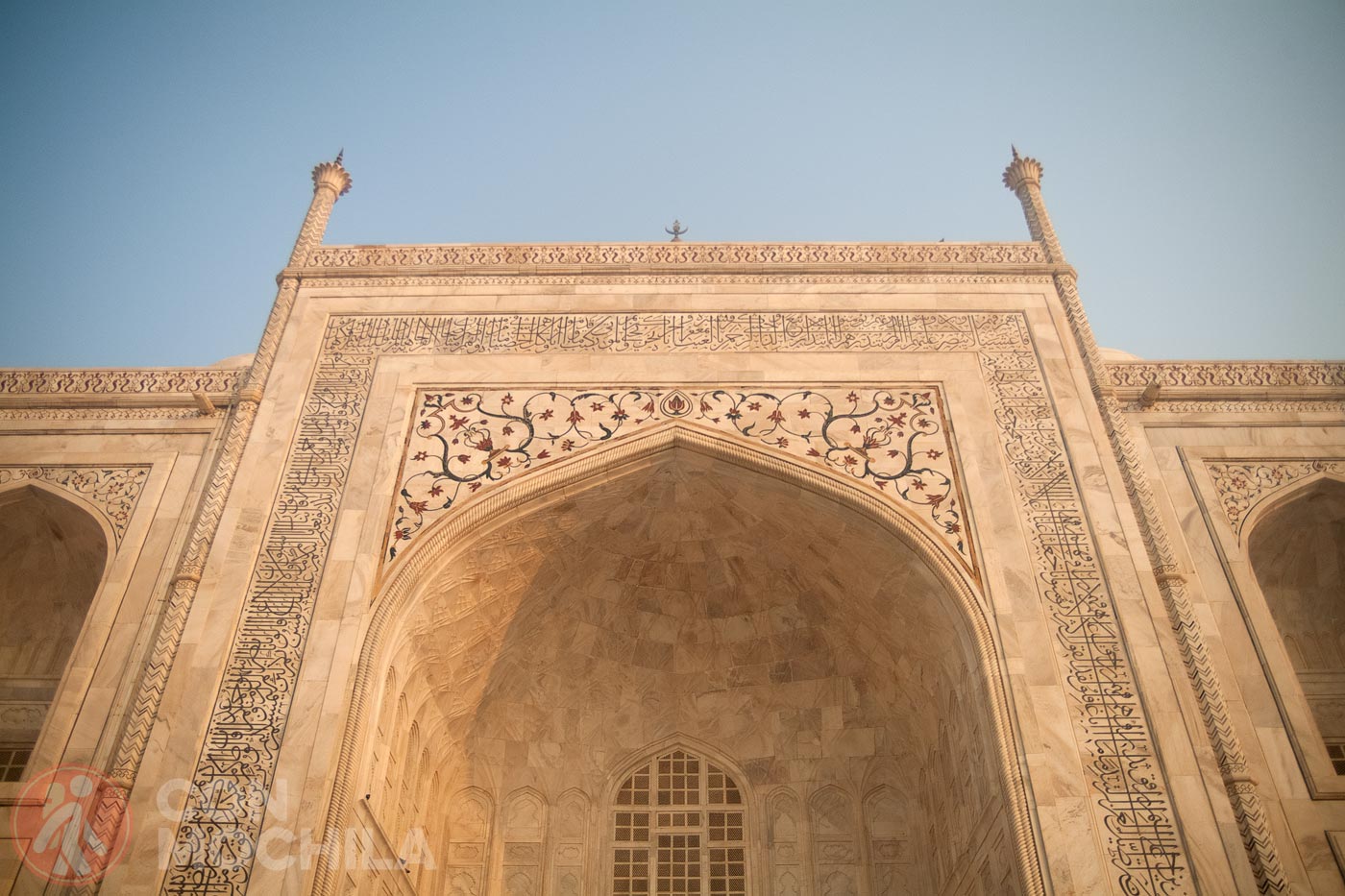
The towers are functional minarets, a traditional feature of mosques from which the “muezzin” calls the Islamic faithful to prayer. Each minaret is divided into three sections by two balconies that wrap around it like rings.
At the top of each tower, a terrace covered by a chattri mirrors the design of the mausoleum. These chattris all share the same finishing touches: the lotus flower motif and a gilded finial on top of the dome.
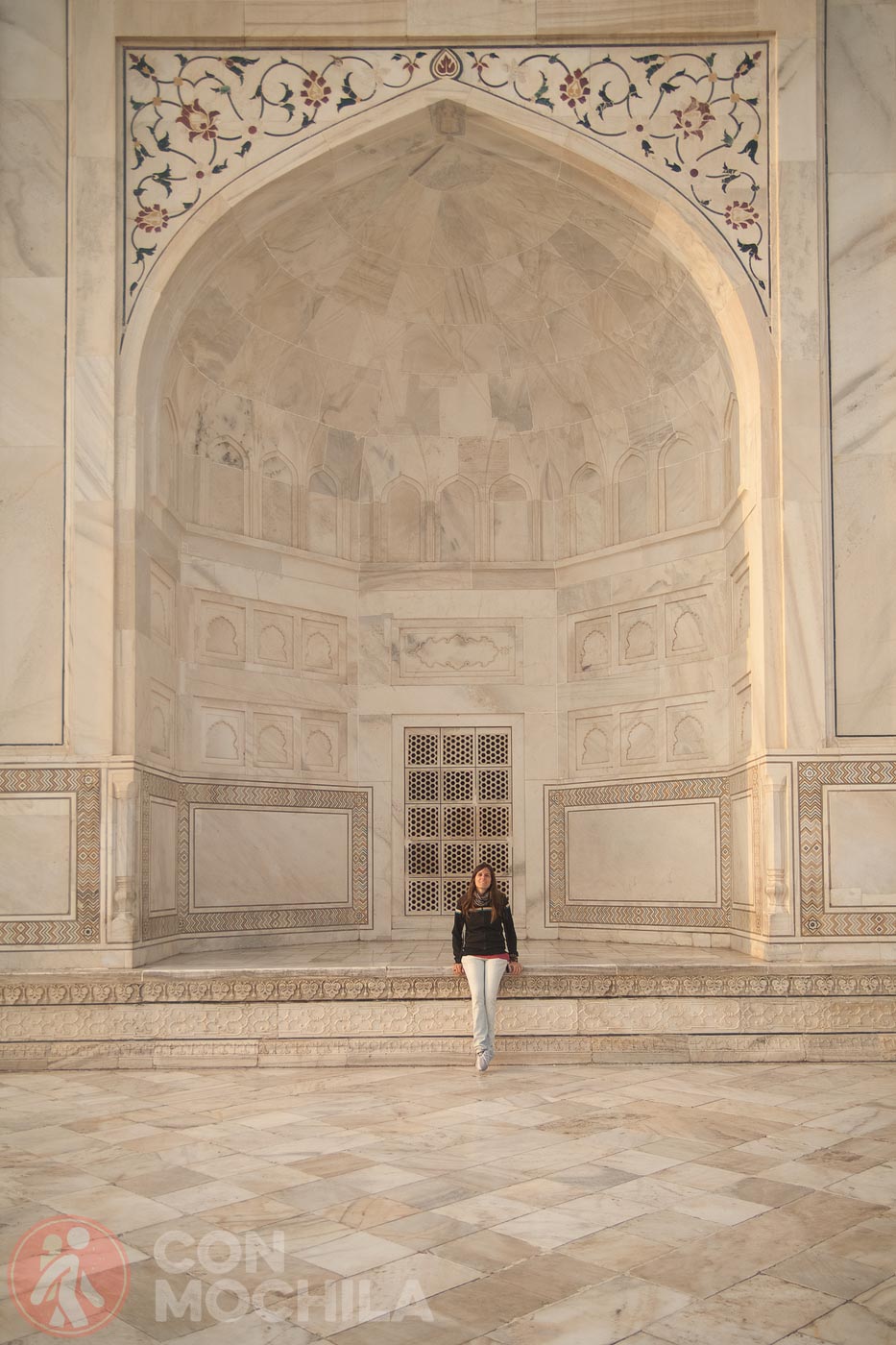
Each minaret was constructed at a slight outward angle from the complex. This design ensured that in the event of a collapse — a plausible concern for such tall structures at that time — the debris would fall away from the mausoleum.
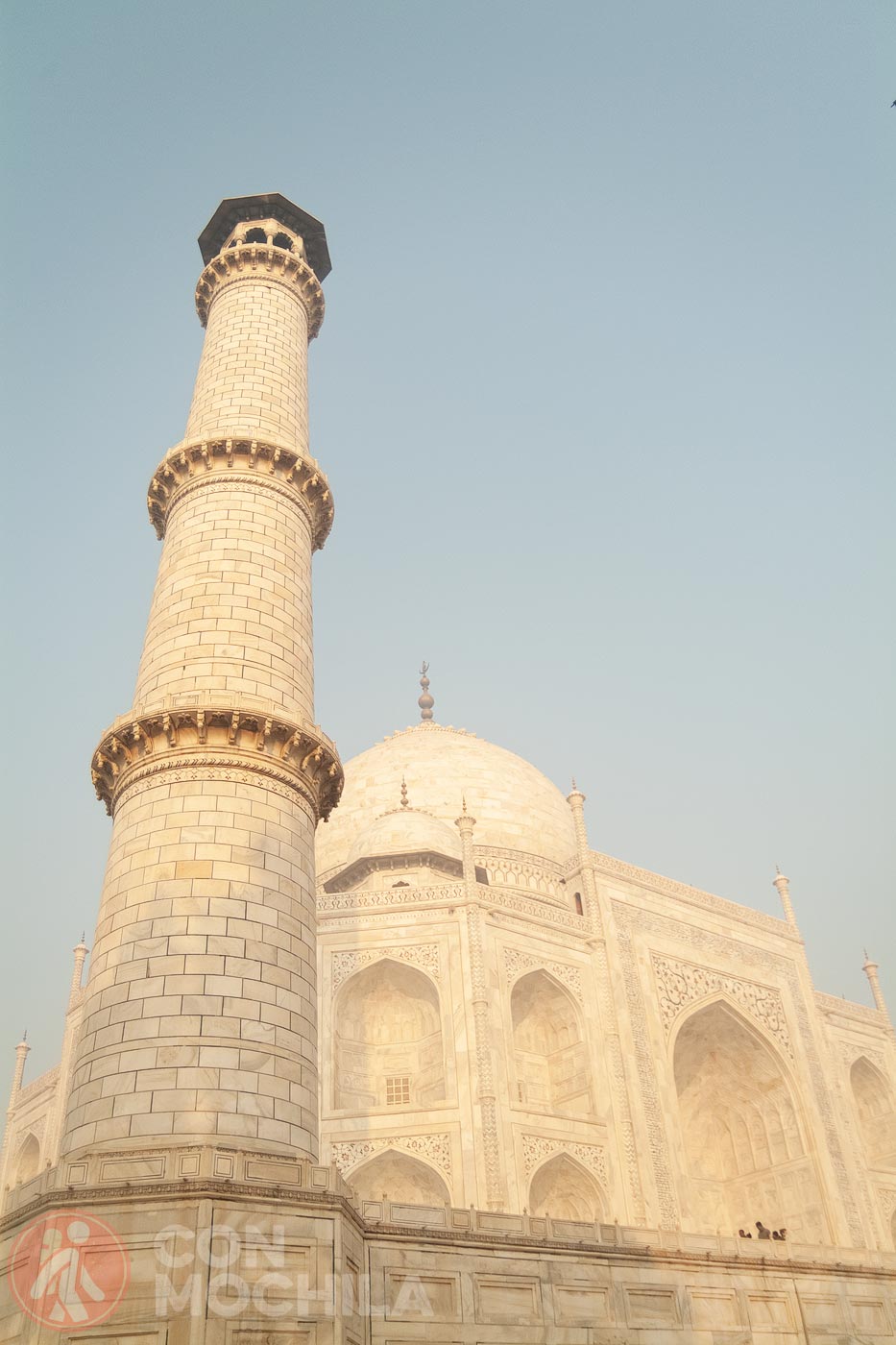
The interior contains a shadowy crypt with the tombs of Mumtaz Mahal and Shah Jahan, who was buried here after his death. Above these tombs, the main chamber houses false cenotaphs, and pierced marble screens allow light to filter into the burial chamber, a typical feature of Mughal mausoleums.
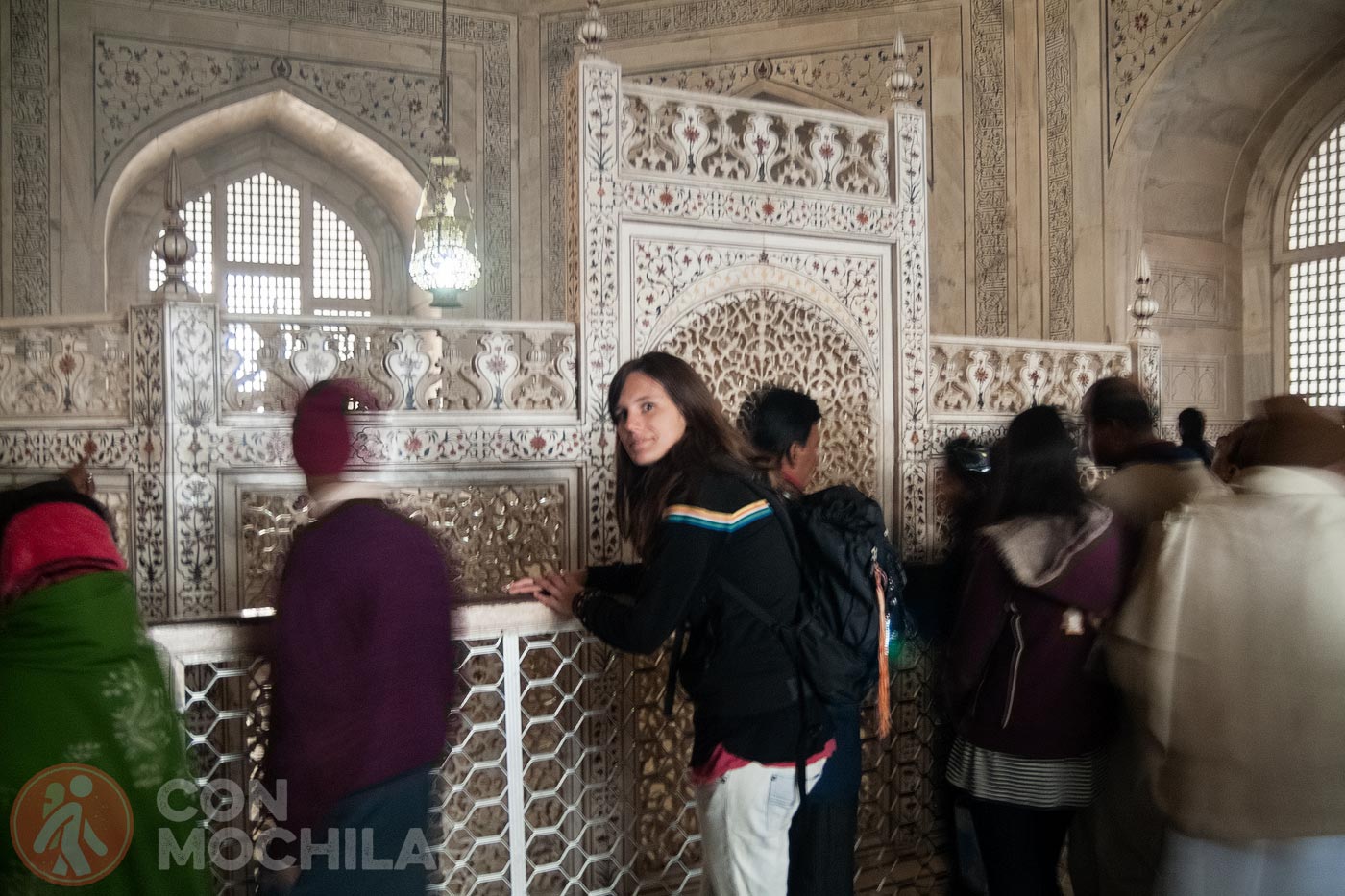
Both tombs are exquisitely inlaid with semi-precious stones, and the tomb of Mumtaz Mahal is inscribed with the ninety-nine names of Allah.
From experience, we recommend visiting the Taj Mahal early in the morning. If you’re staying nearby, you can visit on your own, but you can also book a private tour of the Taj Mahal and Agra Fort for a more comfortable experience.